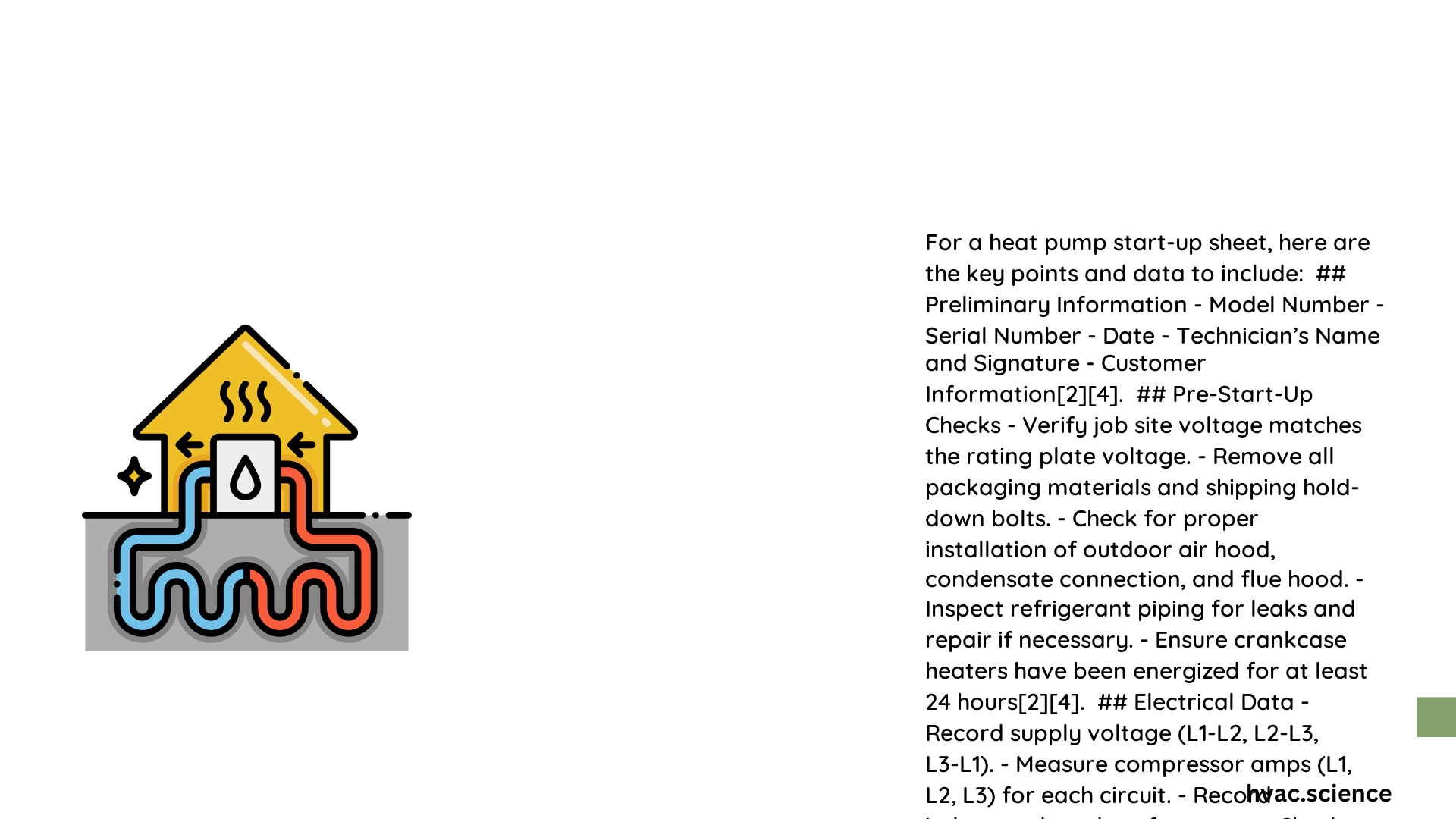A heat pump start up sheet is a critical diagnostic and verification document that technicians use to ensure precise system performance, electrical integrity, and operational safety. This comprehensive document captures essential measurements across electrical, refrigerant, airflow, and mechanical parameters, providing a systematic approach to validate heat pump functionality during initial installation and commissioning.
What is a Heat Pump Start Up Sheet?
A heat pump start up sheet represents a meticulous documentation process that captures critical system performance metrics during initial installation. This technical document serves multiple crucial purposes:
- Validates system electrical and mechanical integrity
- Provides baseline performance measurements
- Ensures manufacturer warranty compliance
- Creates a permanent record for future maintenance
Why Professional Documentation Matters
| Documentation Aspect | Importance Level |
|---|---|
| Electrical Verification | High |
| Refrigerant Circuit Analysis | Critical |
| Airflow Measurement | Essential |
| Safety Compliance | Mandatory |
What Key Components Must Be Documented?

Electrical System Verification
Technicians must comprehensively document:
- Supply voltage measurements
- Control voltage levels
- Component-specific amperage readings
- Electrical connection integrity
Refrigerant Circuit Assessment
Critical measurements include:
- Evaporator pressure and temperature
- Condenser pressure and temperature
- Compressor discharge temperatures
- Superheat and subcooling calculations
Airflow and Pressure Evaluation
Precise documentation requires:
- Supply air CFM
- Return air CFM
- Outdoor air CFM
- Building static pressure
- Pressure drops across system components
How to Perform Systematic Start Up Procedures?
Pre-Installation Preparation
Before initiating heat pump startup:
- Verify all safety protocols
- Check electrical connections
- Ensure proper mounting
- Confirm access panel security
Step-by-Step Startup Protocol
- Energize crankcase heater
- Measure electrical parameters
- Check refrigerant circuit pressures
- Verify airflow rates
- Test control system functionality
- Conduct operational testing
What Tools Are Required?
Essential equipment includes:
- Digital multimeter
- Refrigerant pressure gauges
- Thermometers
- Airflow measurement devices
- Torque wrenches
- Screwdriths
Estimated Time Investment
| Startup Phase | Time Required |
|---|---|
| Pre-checks | 30 minutes |
| Electrical verification | 1 hour |
| Refrigerant assessment | 1.5 hours |
| Operational testing | 2 hours |
| Final inspection | 30 minutes |
What Performance Metrics Matter?
Acceptable Performance Ranges
- Voltage: Within ±10% of rated specification
- Amperage: Match manufacturer’s design parameters
- Refrigerant pressures: Consistent with system design
- Airflow: ±5% of design specifications
Maintenance Recommendations
Periodic Verification Schedule
- Monthly: Filter checks, airflow verification
- Quarterly: Refrigerant circuit inspection
- Annually: Comprehensive system evaluation
Professional Best Practices
- Always follow manufacturer guidelines
- Document every measurement
- Use calibrated instruments
- Verify safety systems
- Maintain detailed records
Common Pitfalls to Avoid
- Incomplete documentation
- Skipping systematic verification steps
- Neglecting safety protocol
- Using uncalibrated measurement tools
Conclusion
A comprehensive heat pump start up sheet transforms installation from a routine task to a precise, scientifically validated process. Meticulous documentation ensures optimal performance, longevity, and reliability.
